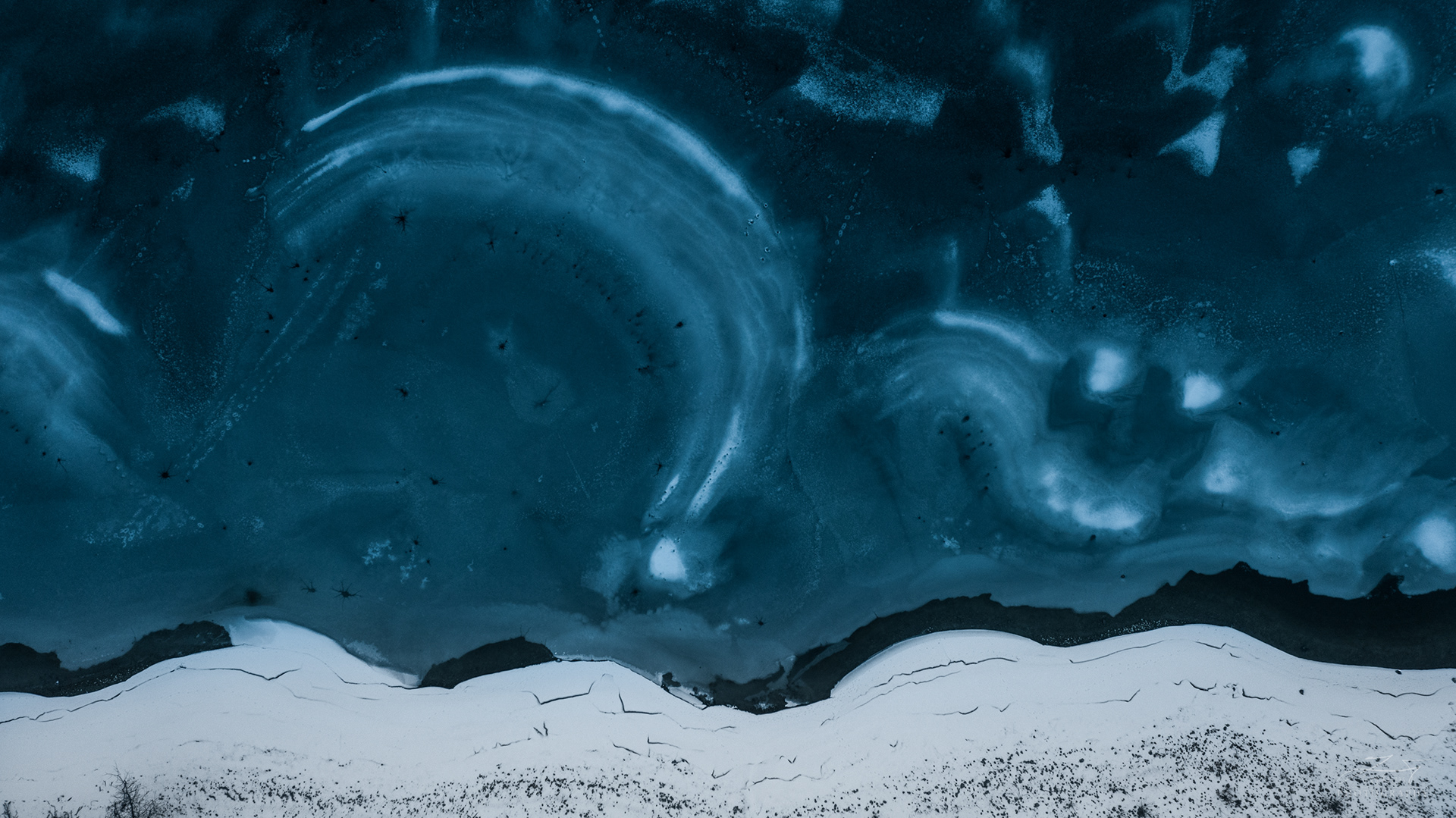

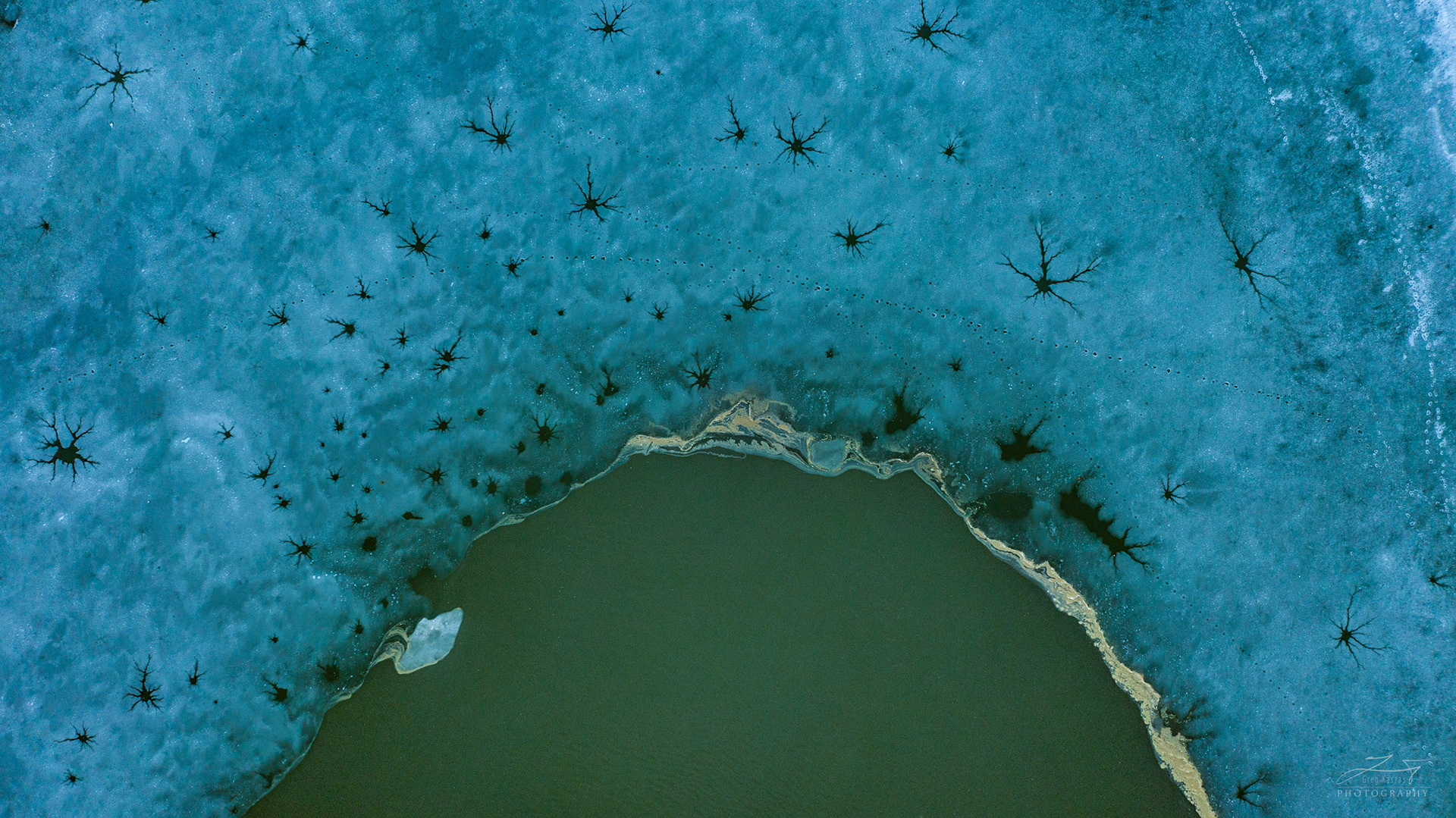
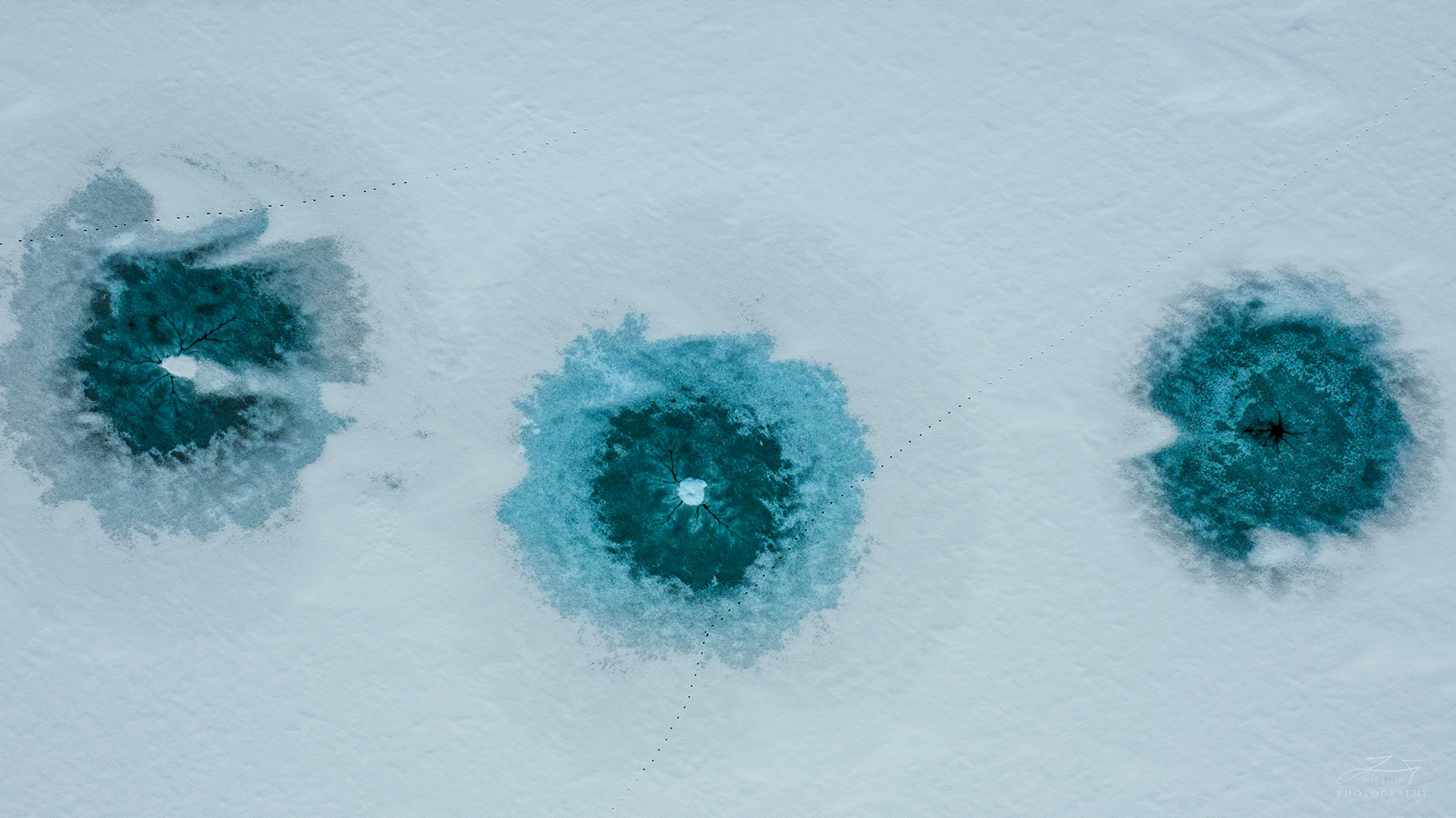


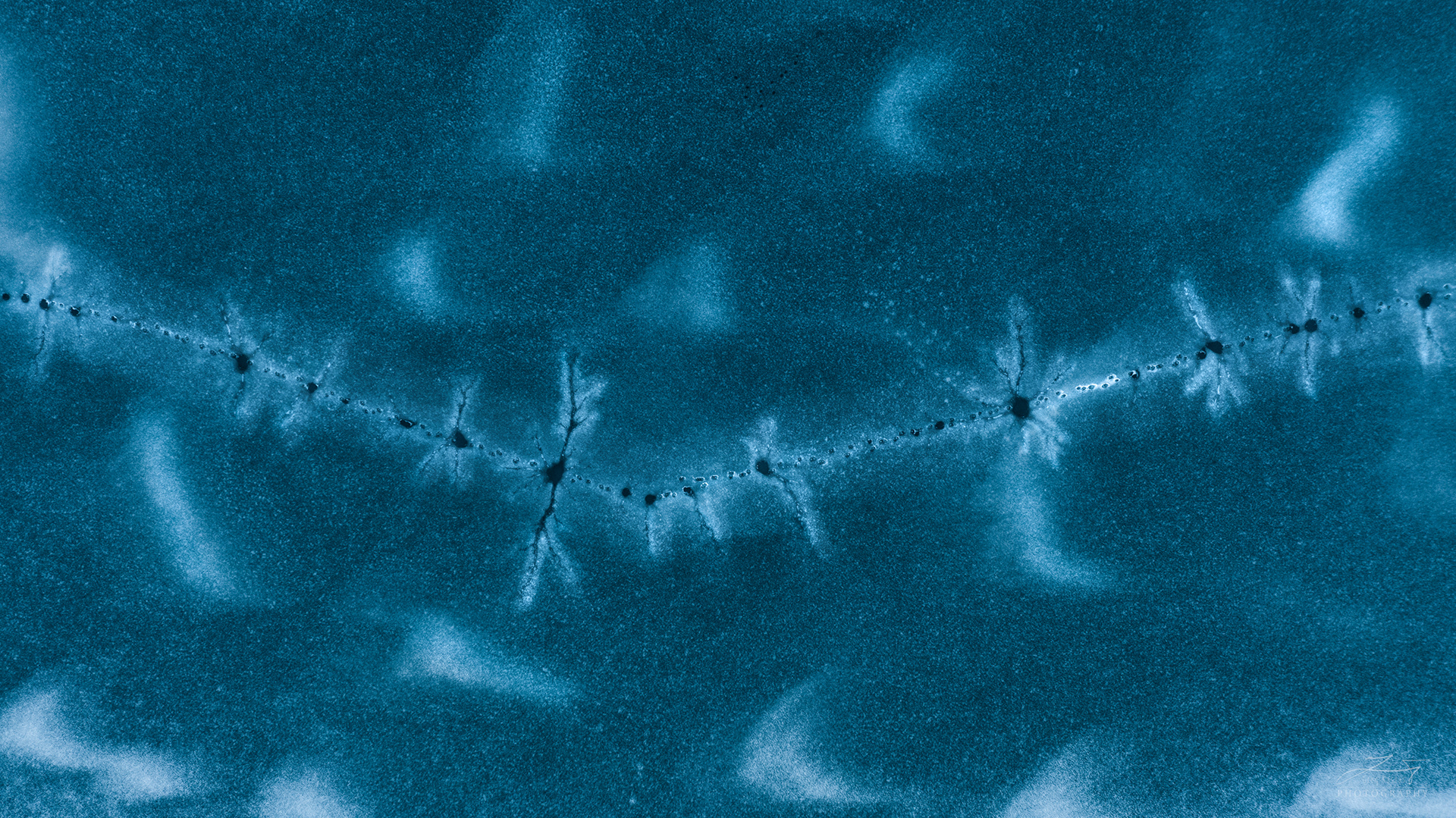
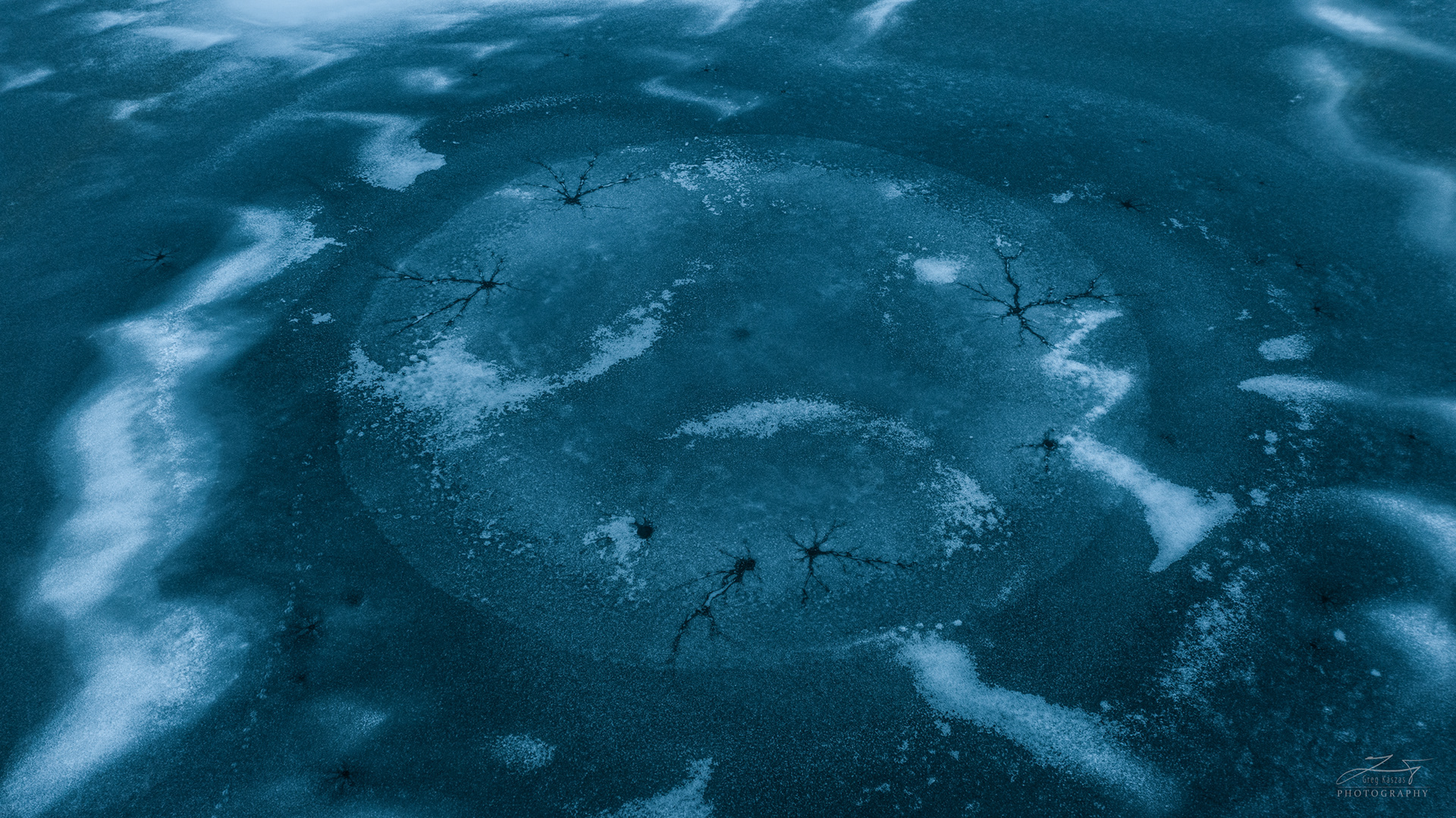

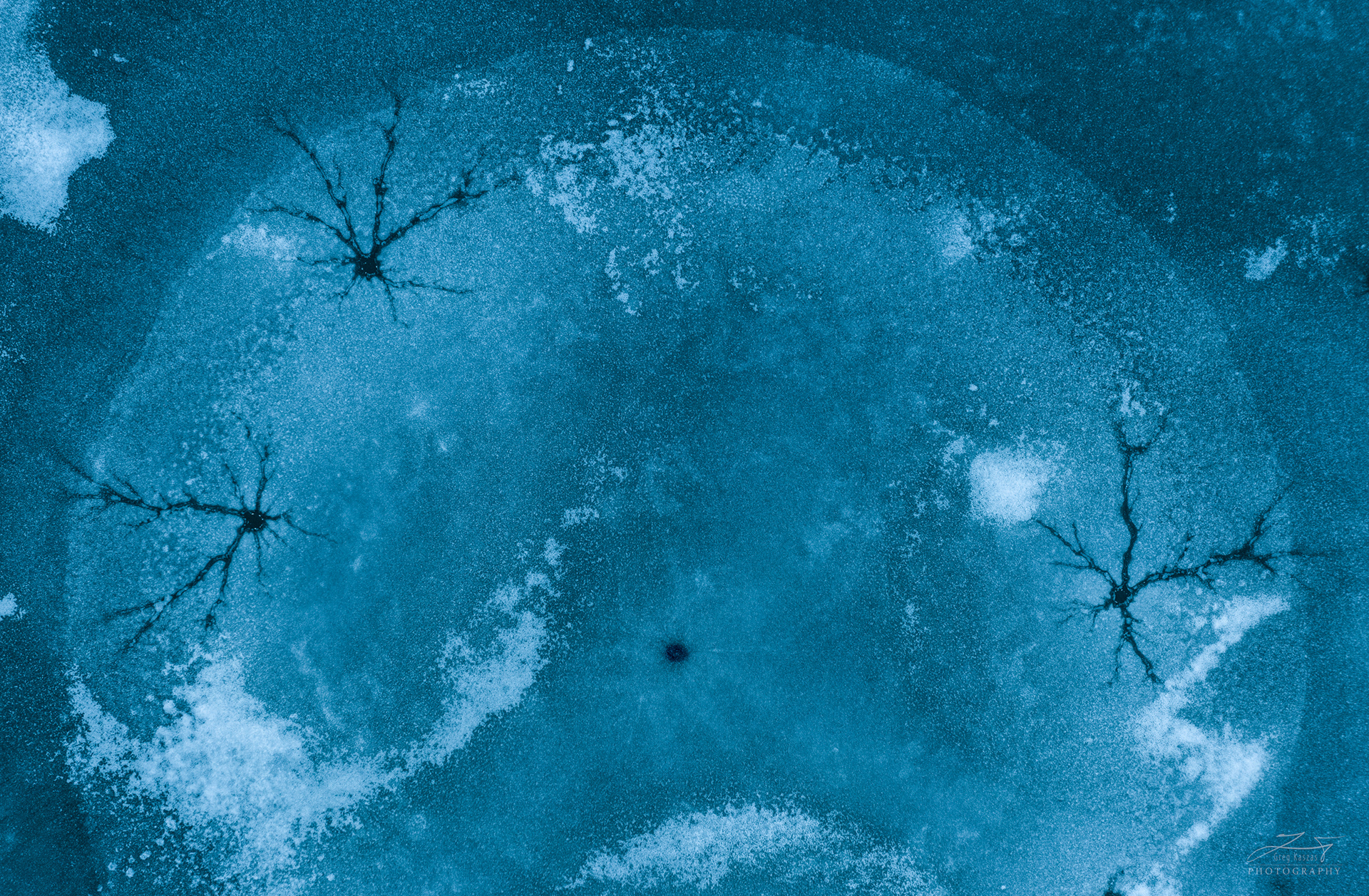


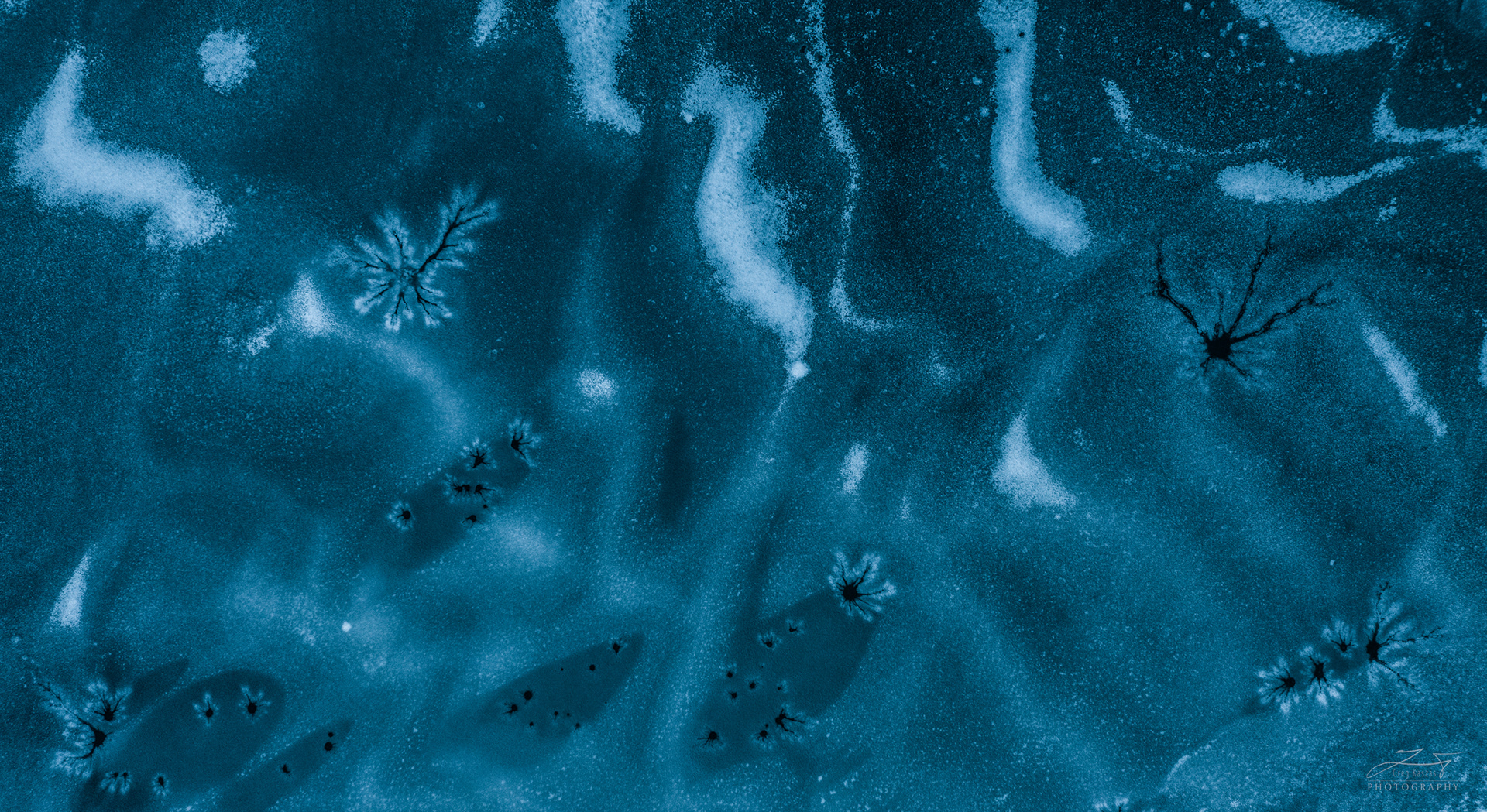

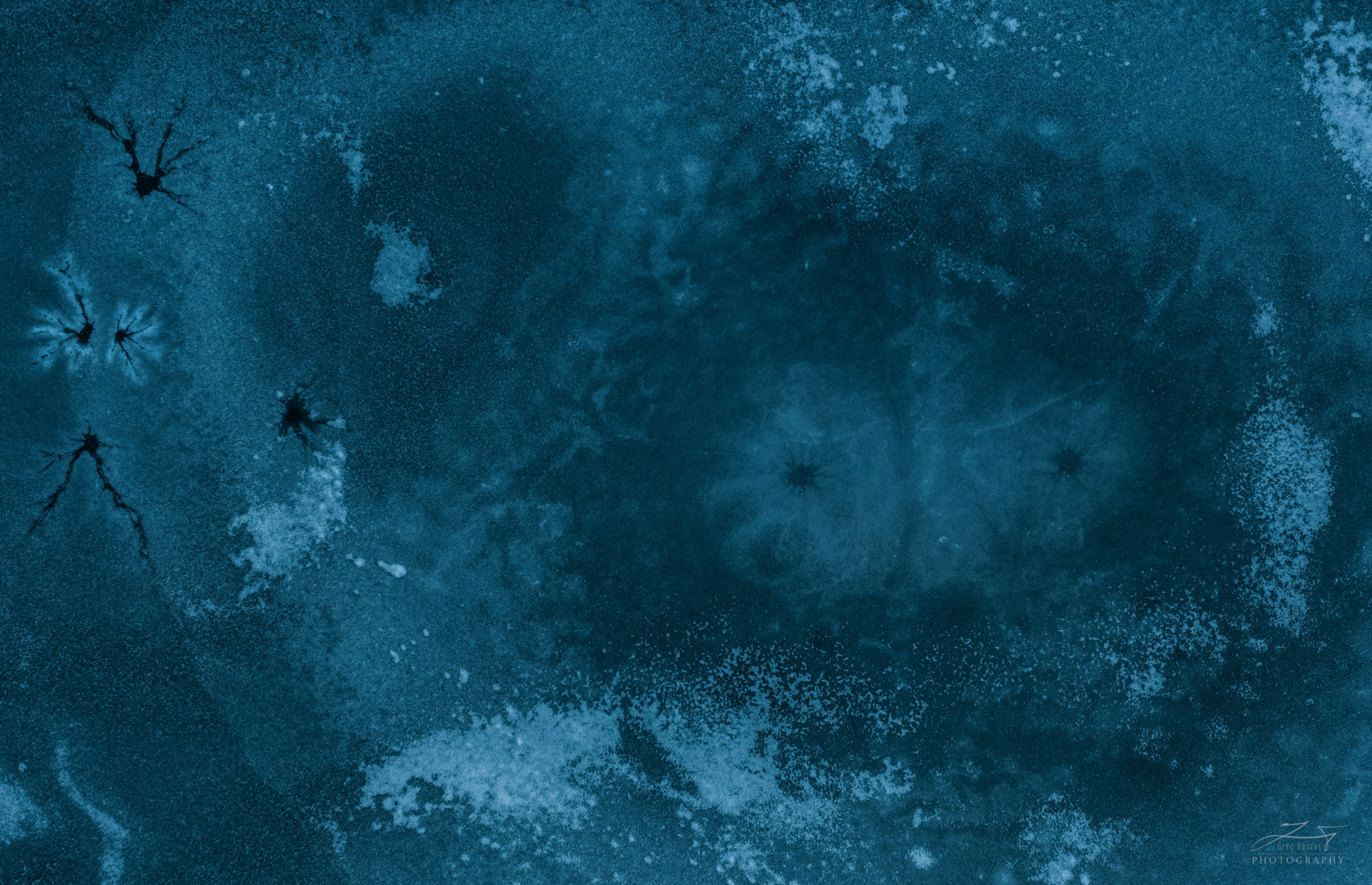
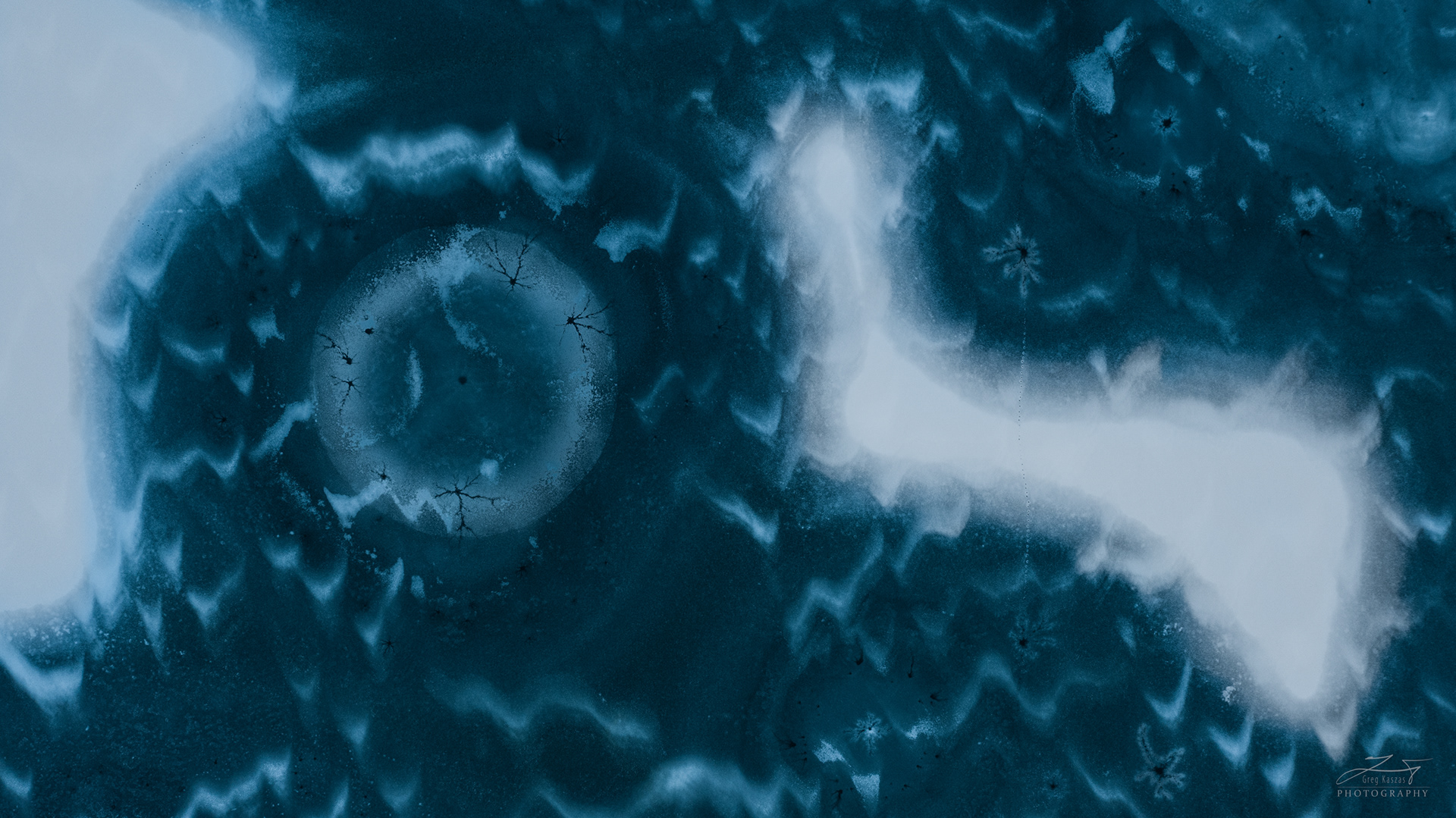



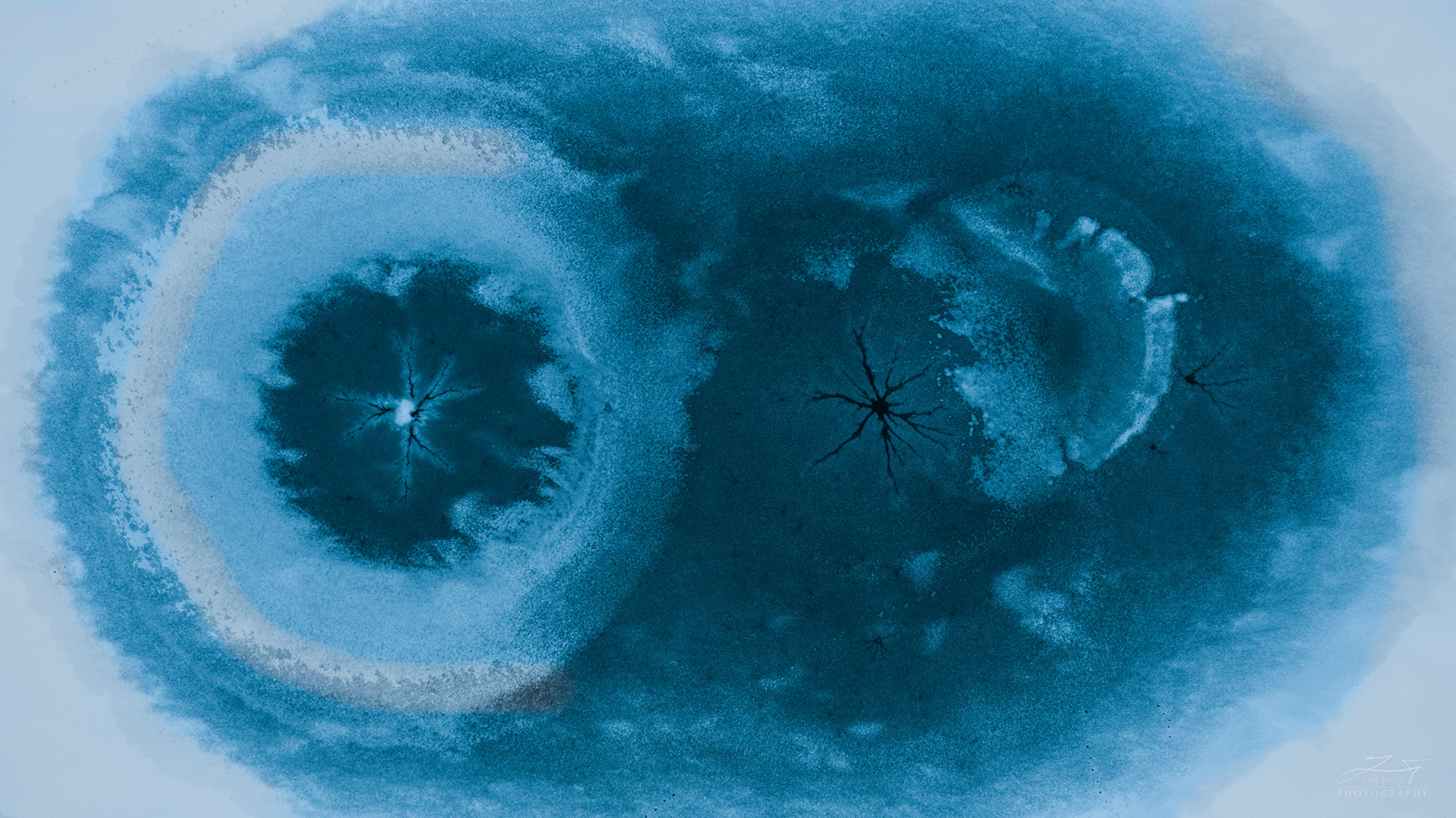


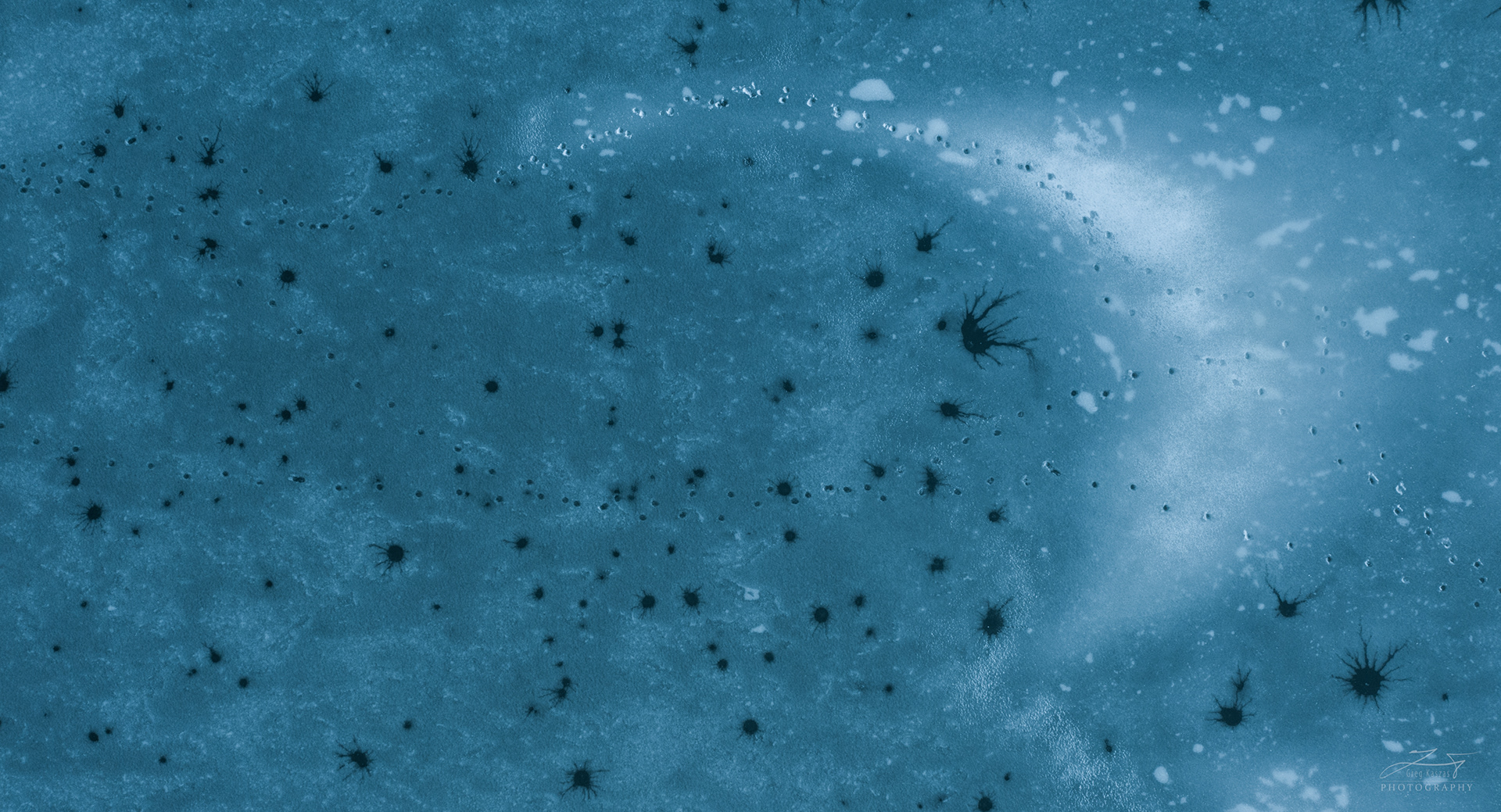
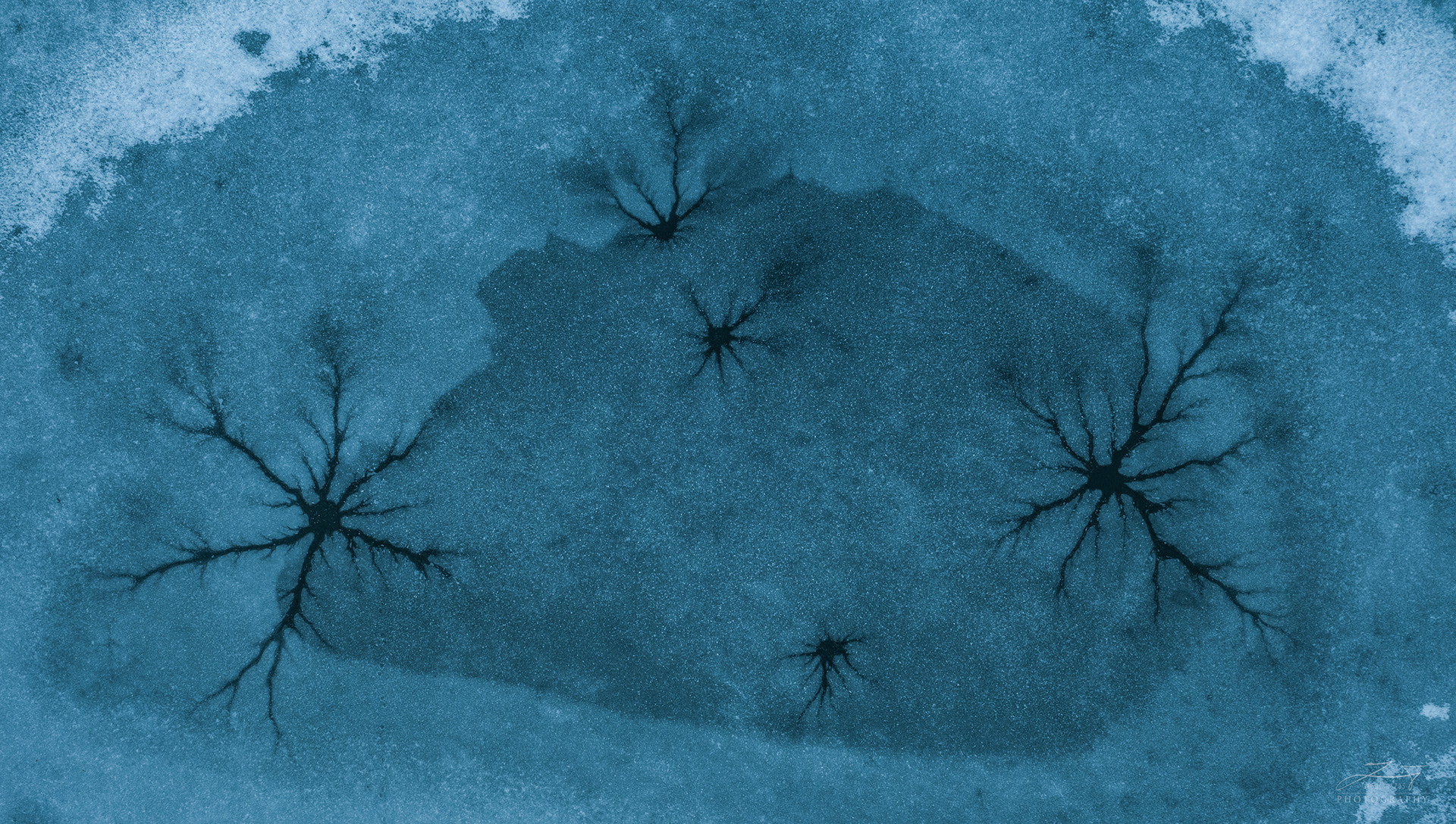
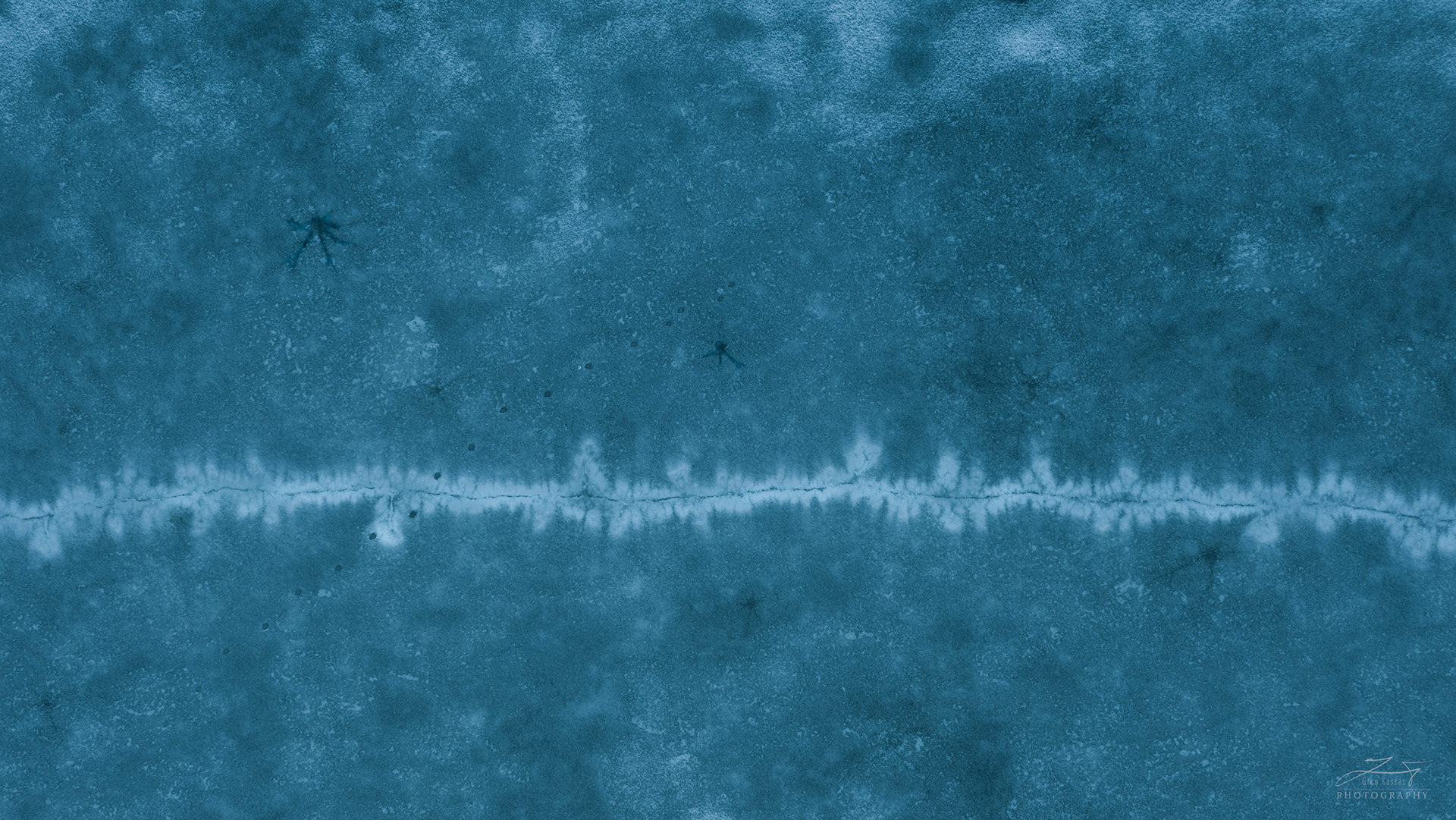
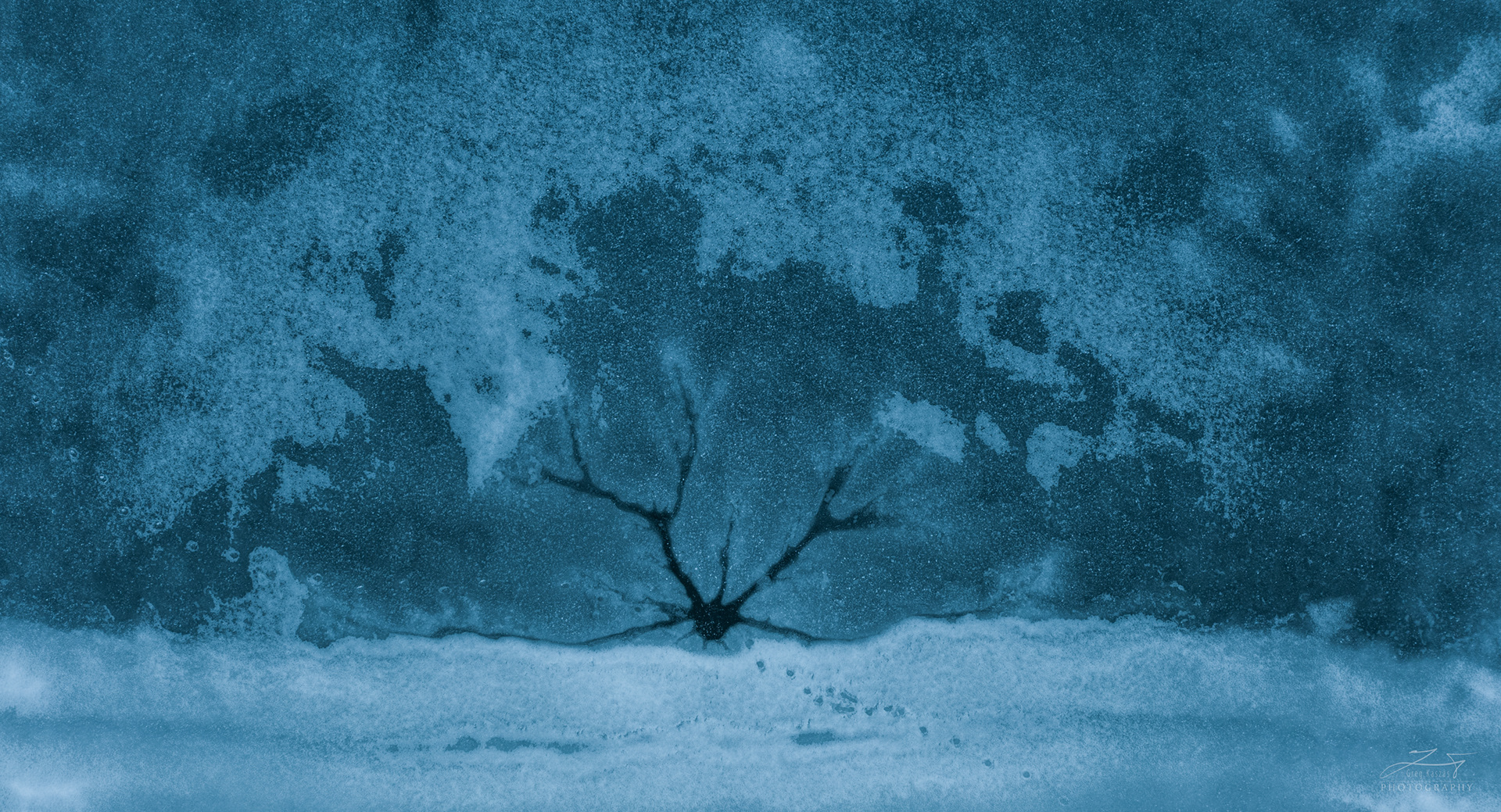


On a January day in Hungary, in the Danube Bend, I observed numerous fascinating shapes on the frozen ice of a bay while surveying the landscape with my drone. The stunning circular patterns, woven together like a spider’s web by the cracked ice surface, are called Ice Spider. A layer of ice forms on the lake’s surface, and due to phase changes, hairline cracks develop in the ice. During snowfall, a thin layer of snow settles on the ice, and through the previously formed cracks, “warmer” water seeps upwards. When this water reaches the snowy surface, it mixes with the slushy snow, creating a blend that begins to melt the air bubbles trapped in the snow. As the air bubbles “escape,” they become darker than the white background. Subsequently, due to various nonlinear dynamic effects, the water continues to seep across the surface, forming branching microchannels. Within these small branches, the same melting, air bubble release, and darkening processes occur. Once the process stops, the resulting pattern, which resembles a giant spider, becomes frozen into the surface.



























